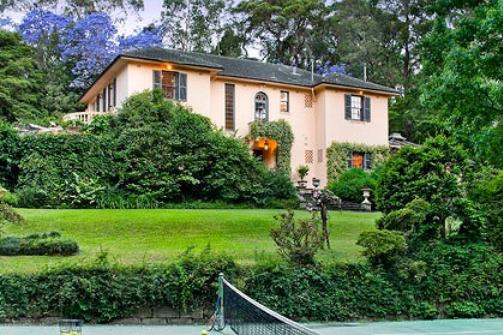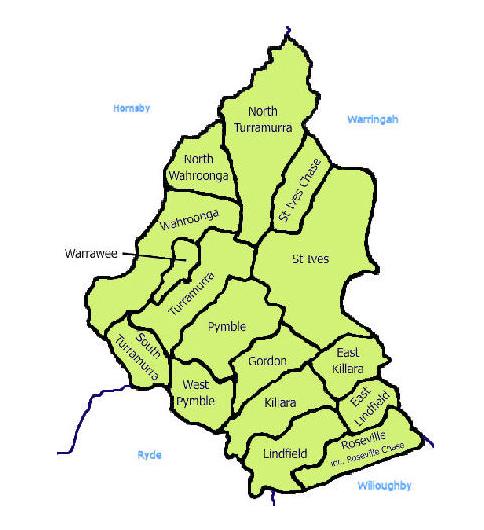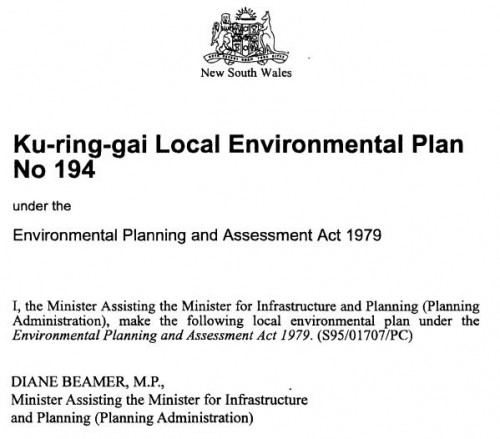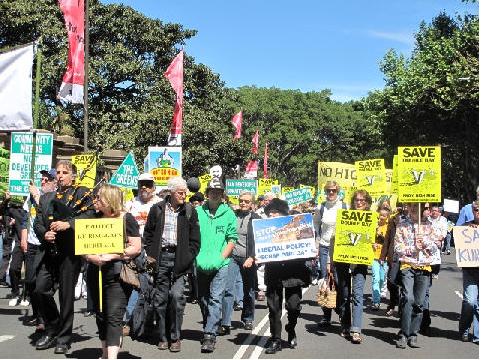Labor envy highrises leafy Ku-ring-gai
Saturday, July 30th, 2011Australia has a flawed, hollow and at best, a casual democracy that only surfaces once every three or four years when the Australian people enjoy the right vote for a government to represent their best interests.
The Ku-ring-gai highrise impost by the New South Wales Labor Government between 2005 and 2011 blatantly revealed how undemocratic a government system we have and how vested corporate interests and party political whims are allowed to run roughshod over local community values.
Communities can learn from the Ku-ring-gai experience.
.
Revisiting NSW Labor’s sprawl alternative – highrise impost on ‘Ku-ring-gai’
.
~ Isabel Lewis
.
Apt, prophetic words by Isabel; but they resonate well beyond Ku-ring-gai, an established leafy residential area of Sydney’s North Shore.
.
.
What’s driving Australia’s urban housing demand?
.
Ku-ring-gai is a microcosm of what has been steadily inflicted upon neighbourhoods across Australia’s capital cities, directly driven by federal uncontrolled immigration policy. Australia’s Federal Department of Immigration does not factor ‘carrying capacity‘ or ‘public infrastructure‘ (more housing, hospitals, schools, transport) into its immigration policy, or social and environmental impacts. They’re dismissed as State problems.
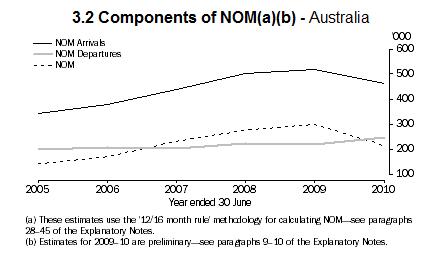 Australia’s Net Overseas Migration (NOM)
(Australian Bureau of Statistics)
Australia’s Net Overseas Migration (NOM)
(Australian Bureau of Statistics)
.
The bush fringe outlying Australia’s capital cities is succumbing steadily to the urban fringe. ‘Housing values‘ euphemistically propagandised as ‘affordable housing‘ override ‘ecological values‘ in human eyes, because humans think they have a preconceived god-given right to breed, proliferate and colonise. Australia’s national uncontrolled immigration policy that has been unchecked for decades by successive Labor and Liberal federal governments, has been the key driver of unrelenting housing property demand in Australia’s capital cities, much to the benefit of corporate developers, who are only too ready to donate generously to the coffers of both complicit political parties. It’s all become very corrupt and locals are losing their valuable leafy neighbourhoods to towering high rise.
The corporate developers, lead by the likes of corporate developer lobby groups Urban Development Institute of Australia and the Urban Task Force cleverly propagate this as ‘unlocking land for housing‘. To the rest of us, it’s called ‘sprawl’.
And it’s urban sprawl because its the big cities that the bulk of the demand, the economic immigrants, want to live. Sydney, Melbourne, Brisbane and Perth have consequently become swamped by unsustainable housing demand.“An independent report prepared for NSW Planning said the city would require an extra 640,000 homes over the next 20 years as the city’s population increased by at least 1.1 million to 5.3 million.
A Centre for International Economics report has found that under a 50:50 ratio between greenfield and established sites, construction of houses on the city’s fringe would cost the State an extra $5 billion for infrastructure over the next 20 years. Building more homes in areas surrounding Rouse Hill in the northwest and Camden in the southwest would incur more than $2.3 billion in extra transport costs and $724 million for water and electricity connections, it said.” [Read More]
 Net Economic Immigration into Australia averages around 200,000 every year
Over 1.2 million immigrants in the past six years!
Net Economic Immigration into Australia averages around 200,000 every year
Over 1.2 million immigrants in the past six years!Nearly all settle in urban Sydney, Melbourne, Perth and Brisbane. .
Frankly, Australia’s mainstream media’s current pre-occupation with the volume of new asylum seekers/refugees arriving by boats is a red herring distraction and propaganda beat up. Australia in the past year has received well less than 10,000 asylum seekers/refugees. This is comparatively few by international standards.
More importantly, the numbers are comparatively few in relation to Australia’s annual economic immigrant numbers. Asylum seekers represent a small fraction of Australia growing population problem.
While the mainstream media and federal politicians are distracted in a froth over the pennies, they are ignoring the pounds. Why! Vested interests are driving Australia’s economic immigration at record levels, and it is all about economic outcomes and nothing about social outcomes.
.
.
How are State governments coping with overpopulation?
.
Well in New South Wales they’re frankly not coping.
The current O’Farrell Liberal-National coalition government is trying to cope with the immigration fueled housing property demand attacking Sydney by reverting to the classic outer suburban sprawl, reminiscent of the 1960s and 70s.
In the lead up to the 2011 NSW election, O’Farrell spruiked pushing more of the city’s new housing developments to the urban fringe, aka ‘sprawl’. His “Sydney development strategy would force more than 550,000 people into the western suburbs and require an extra 128,000 homes to be built on the city’s fringes“. O’Farrell was reacting to the incumbent Labor Government’s policy of medium- and high-density development being concentrated along the rail corridor through his electorate of Ku-ring-gai.
The Centre for International Economics report prepared for NSW Planning said the city would require an extra 640,000 homes over the next 20 years as the city’s population increased by at least 1.1 million to 5.3 million.
[Source: ‘O’Farrell’s housing plan sinks in the west‘, by Barclay Crawford, The Sunday Telegraph, 20110213, ^http://www.dailytelegraph.com.au/news/indepth/ofarrells-housing-plan-sinks-in-the-west/story-fn58y44f-1226005046481].
Now in government, O’Farrell has identified “key growth areas“, is “speeding up the land rezoning process” and will “unlock more land for housing development“. This month, O’Farrell announced that up to 13,000 homes in Sydney’s growth centres (Marsden Park (some 10,000 houses in Sydney’s outer north-west) and Catherine Field (some 3000 houses in Sydney’s outer south-west) would be “released” for greenfield housing development. And with the new government, the new Department of Planning has new consultants and not surprisingly the unpalatable realism of ‘sprawl’ has received new euphemistic branding. It is the government’s ‘Precinct Acceleration Protocol‘ (a new acronym ‘PAP‘)…”to speed up the rezoning of growth centre precincts”. Not surprisingly, the Urban Development Institute of Australia NSW, CEO Stephen Albin, said “it was a good step“. And the Urban Taskforce Australia’s CEO Aaron Gadiel, said “the government plan was positive“. But not surprisingly, they both want more land to be ‘unlocked’!
[Source: ‘O’Farrell unlocks land for 13,000 homes‘, by Anna Patty, Sydney Morning Herald, 20110713, ^http://www.smh.com.au/nsw/ofarrell-unlocks-land-for-13000-homes-20110712-1hcch.html, accessed 20110731]It is not just Sydney that is struggling. Melbourne, Brisbane and Perth are losing the battle to cope with unrelenting population increases and demand for public services and infrastructur.
While state and local governments across Australia are failing to cope with the spiraling housing demand, no-one in government is questioning the demand itself. While state and local governments can’t keep up with the sand bagging tactical response, the broader population tide is unrelenting. The flood gates are being kept open by Canberra. Since few immigrants want to go to Canberra (unknown to immigrants, too cold, not enough work), looking out the window in Canberra, the population problem is not apparent to the politicians.
A 2011 report by the National Housing Supply Council estimating Australia to have a shortfall of 178,400 properties across the country, and forecast shortfall of 640,600 by 2028. [Read More] Hardly any of that will be in Canberra.
The pressures imposed on state and local governments to accommodate the human hoards is nationally the most pressing economic, social and environmental problem of the 21st Century; not climate change.
.
.
‘Immigration is just another dirty word’
[by Jennifer Hewett, The Australian newspaper, 20100723, ^http://www.theaustralian.com.au/national-affairs/immigration-is-just-another-dirty-word/story-fn59niix-1225896226208]
Increasing congestion is causing concern among the residents of Sydney’s western suburbs.
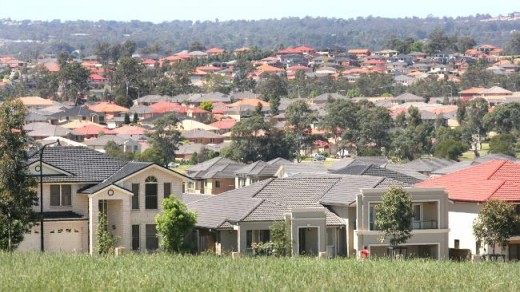 Sydney’s Western Sprawl
(Photo by Dean Marzolla)
Sydney’s Western Sprawl
(Photo by Dean Marzolla)
‘Lunchtime midweek in Campbelltown’s main street in the heart of western Sydney is a slow-moving affair. Cars drive in and out of the one-way street at a leisurely pace. Business is not exactly booming in most of the small, tired-looking shops. There’s plenty of room on the footpath for pedestrians. But underneath the languor, there’s a much more heated mood – particularly when it comes to immigration in general and boatpeople in particular.”It’s just too much,” says one woman. “Sometimes I don’t feel I’m in Australia any more. And the land can’t take it.”
A few metres away, Jeanette Creedon is waiting for customers in the discount clothing shop she runs. She regularly travels to other shops in the chain and says the congestion is terrible.
“It takes me 2 1/2 hours to drive sometimes. But I have given up on the train. It’s like being a sardine and it’s not clean or healthy,” she says. “Immigrants get so many freebies when they get here and there’s plenty of Australians who need a helping hand. And the government desperately needs to do something about boatpeople.”
It’s views such as these that have Julia Gillard hurrying to the neighbouring electorate this same day to address western Sydney’s conveniently timed national population summit. Campelltown is in Macarthur, currently held by the Liberals with a margin of 0.1 per cent. It is one of a swag of vulnerable seats Labor needs to nail down in a region the Prime Minister delicately suggests is reaching capacity.
The new ultimate PC phrase in Canberra is “sustainable population“. The coded message is the need to cut back on immigration. That is even though Gillard refuses to spell out the logic of her position that Australia’s present growth path is “irresponsible“. No, she says, it’s not a debate about immigration. Oh sure.
Instead she relies on a siren song meant to calm the anger about inadequate services and crowded roads and trains without committing her government to anything concrete.
She says she will focus on “preserving the quality of life of our Australian sanctuary“. She emphasises that she does not believe in “hurtling down the path to a big Australia“. She says it’s time to question assumptions and values that haven’t changed since the beginning of the post-war period (and the start of Australia’s hugely successful mass immigration program).
“It is time to consider whether our model of growth is right for an Australia facing fundamental constraints on our water supplies,” the Prime Minister tells the conference. And, of course, fundamental constraints in areas such as transport.
“If you listen to people in places like Campelltown, Penrith, Parramatta or any of the many suburbs in between, I suspect many of them would say to you, yes, Australia is the world’s best country,” she says.
“But I suspect many would also say, year by year, it’s getting a bit harder . . . more time on the road, less time with the kids . . . They wonder how many more people can fit on the sardine express to Central, Town Hall, Wynyard. And on our motorways and roads, they could be forgiven for thinking they’d got in the car in Penrith but were caught in traffic in Los Angeles.”
Yet rather than suggest the real problem is that government, especially the NSW state Labor government, has been totally unprepared to deal with the pressures of an ever-expanding city, it’s much easier to talk vaguely about the need for sustainable population and nostalgically about Australia as a land of openness and space.
Her former close colleague, ex-Labor leader Mark Latham, a long-time resident of western Sydney, has been quick to accuse the Prime Minister of running a phoney population campaign.
“If it’s not an immigration debate, it’s no debate, ” he tells Sky News. “And I’ll tell you what it is, it’s a fraud. It’s an attempt to con the people of western Sydney she’s going to do something about congestion.”
Labor is clearly reluctant, so far at least, to follow the Liberals’ tack and commit to an actual cap on immigration numbers as a way of “getting population under control“. But the Liberals are leaving it up to the Productivity Commission to determine the numbers. And if the commission comes up with the obvious point that economic growth requires high levels of skilled immigration, it will all be conveniently post-election.
The government has established three expert panels with impressive titles: Demographic Change and Liveability, Productivity and Prosperity, and Sustainable Development. Tony Burke, in the new position of Minister for Sustainable Population, will also put out a strategy paper — but, of course, later in the year.
For now, both sides appreciate that this issue has been brewing a long time, particularly in the outer suburbs, and is one of the most sensitive of the election campaign.
Bob Birrell, a professor at Monash University and a prominent demographer, tells The Australian the public’s mood is finally reaching the ears of the politicians.
“Their concerns about the costs of population growth, issues such as congestion and housing, are real,” he says.
But it’s also an issue in which reality mocks the repetitive soundbites of an election campaign.
In essence, it requires recognition that Australia has prospered for decades on the back of a strong immigration policy and that the economy will continue to need high levels of skilled immigration if it is to continue to grow in a truly sustainable way.
Immigration has helped, for example, to keep the mining boom going without a wages explosion that would increase inflation pressures and interest rates.
Immigration also provided some of the economic momentum to help shield the economy from recession during the global financial crisis. Yet governments have resisted the need to make sure services and infrastructure keep up with the demands of a steadily increasing population, most obvious in areas such as the outer suburbs of Sydney and the high-growth areas of southeast Queensland.
Add concerns about the fragility of Australia’s environment, a spike in immigration numbers in recent years and, most explosive of all, a surge in the boats coming, and the politics has turned toxic.
Many voters, even those in comfortable inner-city middle-class suburbs where apartment blocks are steadily replacing houses, feel uneasy about where it will all all end.
They want jobs for their kids and the opportunities of growth without the hassle.
It doesn’t help this notion of being crowded out when Australia’s pattern of population has been to cluster in big cities, making it one of the most highly urbanised countries in the world.
But the Labor government seems to have no stomach to argue either the economic virtues or the inevitability of continuing high immigration. That vacuum is allowing the perfect political storm to develop.
The 36 million figure by 2050 that got everyone so agitated, for example, came from Treasury’s Intergenerational Report last year. It was merely an extrapolation of current trends based on the fertility rate and an average net increase of 180,000 a year from immigration. The figure actually required Australian population growth to slow to an increase of 1.2 per cent a year from the 1.4 average of the past 40 years. Kevin Rudd initially embraced this but Labor has been rowing backwards ever since.
It’s significant that net immigration in recent years has been much bigger than the official 180,000 permanent intake – with a net figure of 300,000 last financial year. This was largely due to skewing of the temporary visa system for overseas students, which has been belatedly tightened to avoid it becoming the easy route to permanent immigrant status. The change in the student visa system and the government’s tightening of requirements for business visas were always going to bring down the 300,000 figure quickly.
But what it doesn’t do is fix the skills shortages that are already a constant for employers and will continue to be a natural outcome of the growth of the economy. In Western Australia, the unemployment rate is back to 4 per cent already. This shortage will become more apparent in the next decade given the demographic time bomb of an ageing population.
The Australian Chamber of Commerce and Industry’s Peter Anderson says it is difficult to get rational debate in an election campaign, particularly when the issue of border protection is mixed up with the need for skilled migration and broader population policy.
“This is very damaging to the national interest because it fails to recognise our economy requires a judicious mix of skilled migration and natural increase for the next 50 years,” he says. “Our growth forecasts on returning the budget to surplus and improving our standard of living depend on our economy getting bigger, and that requires skilled migration.”
The corollary, of course, is to do more to train the Australian workforce. It’s a requirement simultaneously pushed, not coincidentally, by Gillard as she unveiled extremely modest measures last week to help schoolchildren choosing a trade as a career.
For all the talk of an education revolution, Labor’s approach has been, at best, a modest and often ineffective way of addressing skills shortages.
Over time, Australia’s immigration numbers tend to go up and down according to the economic cycle. Assuming Labor and the Liberals are neither projecting nor wanting a big downturn in the economy, it will require high levels of immigration to continue before any long-term investment in roads and the rail system begins to emerge.
The government is trying to negotiate though this dilemma by suggesting immigrants will be encouraged to go to regional areas rather than the outer suburbs of Australian cities. In most cases, this will remain a political dream.
In a state such as Western Australia, for example, the fly-in fly-out worker from Perth is the standard. In Queensland, there’s more spread of population in terms of mining towns but the real pressure is on the southeast, dominated by an influx of homegrown refugees from other states. In Sydney, immigrants are not suddenly going to decide the best job opportunities are in small rural towns that Australians are leaving.
Nor are most people going to follow the now discredited Bob Carr theory, which declared Sydney was full and attempted to prevent urban sprawl by making it prohibitively expensive to build houses there, while neglecting infrastructure and focusing on higher-density housing in inner-city areas.
The only option is to accept the reality that Australian cities will continue to grow, to try to develop more job opportunities and work centres in outer suburban areas and to build the infrastructure that will enable people to live and breathe more easily.
Just don’t expect any of that to come out of this election campaign.’
.
.
Lessons from NSW Labor’s highrise impost on Ku-ring-gai
.
Just two years ago in 2009, the then NSW Labor Planning Minister, Kristina Keneally projected:
“Sydney will grow and it will change … it is projected to reach a population of about 6 million by 2036, up by about 1.7 million people from 2006.”
.
Yet, instead of questioning or challenging the human population growth, the NSW Labor Government accepted it in its limited short term perspective of providing cheap economic demand. Labor opted away from pursuing outer urban sprawl due to the costly infrastructure it would require. Labor’s accommodating strategy was to concentrate the population growth along existing transport corridors.
Since it knew it would never win Sydney’s leafy Liberal blue ribbon seat of Ku-ring-gai for votes, Labor chose Ku-ring-gai for major high density high rise development. Labor’s unpopularity in Ku-ring-gai was cemented two years later in the NSW Election of 2011. Barry O’Farrell’s Liberal/National Coalition secured 87% of the vote.
Meanwhile, Labor introduced land use planning legislation that flatly ran roughshod over local councils and residents. In Ku-ring-gai the affected suburbs included Gordon, Killara, Lindfield, Turramurra, Wahroonga, Pymble, Roseville and St. Ives.
The following extracts, articles and photos are testament to what happened next to leafy Ku-ring-gai.
 Ku-ring-gai’s leafy amenity
Gardens established over a century by generations of residents
Ku-ring-gai’s leafy amenity
Gardens established over a century by generations of residents
.
. Turramurra landscape
Turramurra landscape
.
.
The highrise impost on Ku-ring-gai started back in the days of NSW Labor Premier Bob Carr who was anti-sprawl. His Planning Minister in 2004, Diane Beamer MP, signed off on a new planning instrument for Ku-ring-gai – the infamous ‘Local Environment Plan 194‘. Its main impost was to rezone the rail corridor through Ku-ring-gai into allowing “multi-unit housing” (read ‘highrise’) development under the guise of “providing increased housing choice” (Ref. Div 3 ‘Aims and Objectives‘).
The following year in 2005, the Carr Labor Government introduced its notoriously undemocratic Part 3A planning provision for New South Wales, which legally handed the New South Wales Planning Minister consent authority (read ‘absolute power’) for major projects deemed to be of state or regional significance. Of course, many developers made sure that their projects became deemed to be ‘State Significant‘. The new law allowed the State Government to overrule local planning objectives and zoning rules and ignore the rights of local councils and their communities. Carr then resigned and left the mess.
Under Planning Minister Frank Sartor, in the 2007-08 financial year, 295 of the 296 applications were approved under Part 3A, despite over 14,000 public submissions being received, most opposing projects on environmental and/or heritage grounds.
“If you get your project called in under Part 3A you can’t lose really,” said Sylvia Hale, NSW Greens MP and Planning spokesperson. “It is virtually certain your project will be approved.” [Source: ^http://nonewcoal.greens.org.au/on-the-burner/part-3a-99.6-of-projects-approved, 20081120]
Then once Kristina Keneally became Planning Minister from October 2009, she approved ninety Part 3A projects within the first five months. “The rush of approvals makes Frank Sartor look like a rank amateur,” the Opposition’s planning spokesman, Brad Hazzard, said. One in 10 of the major projects approved since Ms Keneally became minister involve donors to the ALP.’ [Source: ^http://nonewcoal.greens.org.au/on-the-burner/new-minister-hastens-developer-approvals]..
.
‘Concrete raiders of a stately Eden’
[by Wendy Frew, 20080823, ^http://www.smh.com.au/news/national/concrete-raiders-of-a-stately-eden/2008/08/22/1219262525172.html]Privacy destroyed … Jenny Lim waters the front garden of her much-loved Lindfield home of 12 years, newly hemmed in by apartment blocks.
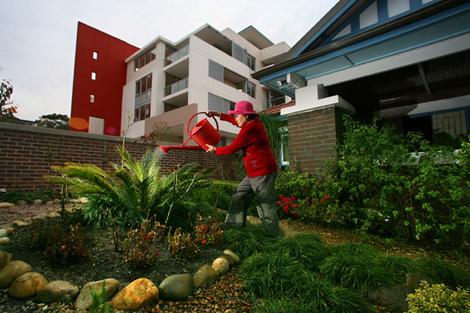 The developers go to town in Lindfield and privacy is destroyed by highrise
(Photo by Bob Pearce)
The developers go to town in Lindfield and privacy is destroyed by highrise
(Photo by Bob Pearce)
Residents of the rapidly growing district of Ku-ring-gai believe they have been forsaken for the developer’s dollar. On the quiet, leafy streets of Ku-ring-gai, on Sydney’s upper North Shore, the houses are shaded by a canopy of native trees, the shopping centres have the air of a country village, and the whole area is enveloped in a well-heeled, conservative hush.
This is the landscape that inspired the watercolours of Grace Cossington Smith and Ethel Turner’s classic childhood book Seven Little Australians.
But Ku-ring-gai’s suburban nirvana is at risk, according to residents, who say both the State Labor Government and Ku-ring-gai Council have forsaken them for the developer’s dollar.
.
The Government’s planning philosophy for all of Sydney:
Build high-rise apartments along railway lines to avoid urban sprawl!
.
– could not be more damaging for Ku-ring-gai, say residents, because that is where some of the best examples of heritage homes can be found.
In the past four years, development applications for more than 3600 units worth more than $2 billion have been approved for the area.
That has gone a long way to meet the Government’s Metropolitan Strategy requiring Ku-ring-gai to provide an extra 10,000 new dwellings by 2031.
.
The Planning Minister, Frank Sartor, says ‘Ku-ring-gai must accept its share of Sydney’s growth‘, but the Mayor of Ku-ring-gai, Nick Ebbeck, worries that nothing his council does will satiate the Government’s desire to push more people and higher apartment blocks into this traditionally blue-ribbon territory.
Regardless of the merits of urban consolidation, the changes will rewrite the map of Ku-ring-gai. Block by block, rezonings are allowing polished concrete blocks to replace the stately homes of the 1920s, ’30s and ’40s.
Where the zonings have been changed, people are selling their homes to developers rather than live in a street that has lost its charm.
Those who have stayed, such as Jenny and Beng Lim, have found themselves squeezed between buildings that look more like office blocks than apartments.
When the Lims moved to their California bungalow in Burleigh Street, Lindfield, 12 years ago, there was no hint of what was to come. Back then, there were 10 bungalow homes in the street and little traffic. Today only two houses are left, a massive apartment block looms over their backyard, and two more five-storey buildings are going up across the road.
Mrs Lim worries about the influx of residents and traffic the developments will bring.
“It is a hard decision to make but I believe we will stay put,” she says. “We have put a lot of effort into the house. It is a home, not just a house.”
The developers are destroying the very features that attract people to the area, according to the residents group Friends of Ku-ring-gai Environment.
“It is like they are chopping out great chunks of the character of these suburbs. There will be no heritage left worth protecting,” says the group’s vice-president, Kathy Cowley. “Liberal and Labor are exactly the same on this issue and that is why we have no allies in this battle.”
Two years ago, the group became so concerned at the pace of development across Ku-ring-gai’s nine suburbs that they began to photograph what was being lost. Half the 4000 photographs they took will be included in a book soon to be published that documents the area’s inter-war heritage buildings, such as the Walter Burley Griffin house in Marion Street, Killara, and The Oaks, a large Federation house with turrets and detailed fretwork, on the Pacific Highway.
Mr Sartor denies the planning strategy will change the area’s character. “I don’t think they have been asked to do an unfair thing,” he told the Herald, adding that any complaints about the design of the buildings should made to Ku-ring-gai Council because it had approved most of the development applications.
“The local interests are legitimate but so is the issue of Sydney’s carbon footprint.”
Cr Ebbeck, who with some other Ku-ring-gai councillors stood as an independent but is a member of the Liberal Party, says the rezonings will affect about 5per cent of the community and dramatically change the character only of areas along the transport corridor. “The bad news is that it is where all our heritage is.”
Cr Ebbeck says the council has tried to work with the Government on the planning changes, but it still waiting for the minister to approve special heritage zonings suggested by the council.
“I am not against development but I am against this crass way of doing it, this one-size-fits-all approach,” he said.’
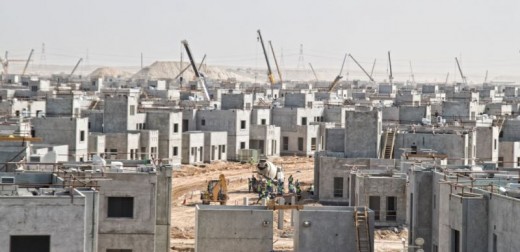 Cheap and nasty precast concrete panel design
It may be pragmatic in the Abu Dhabi desert, but it is out of place in Federation Ku-ring-gai
Cheap and nasty precast concrete panel design
It may be pragmatic in the Abu Dhabi desert, but it is out of place in Federation Ku-ring-gai
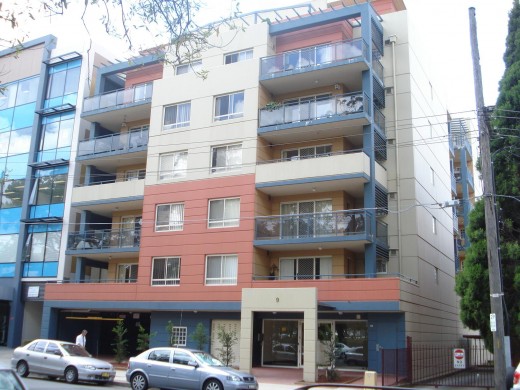 Precast Concrete Panel highrise in Sydney’s Liverpool
An industrial amenity threat to Ku-ring-gai
Precast Concrete Panel highrise in Sydney’s Liverpool
An industrial amenity threat to Ku-ring-gai
.
.
‘Friendless and furious: Ku-ring-gai fights for life’
[by David Marr, 20090919, Sydney Morning Herald, ^http://www.smh.com.au/national/friendless-and-furious-kuringgai-fights-for-life-20090918-fvcr.html].“The word was Ku-ring-gai had it coming to them“…Kathy Crowley illustrates the problem the suburb faces. Stripped of any say in how it is developed, the north shore is battling on alone to save its heritage, writes David Marr.
“We’ll see plenty of disasters,” said the deputy mayor as the minibus pulled out of the Ku-ring-gai Council Chambers. The small party had accepted the council’s invitation “to witness firsthand the impacts of state-imposed over-development on this beautiful part of Sydney”.
It’s blossom time. The crab apples are flowering at full throttle. Freesias are poking through the lawns. Magnolias are coming into leaf. Everything about this scene is familiar from my childhood except the glimpse now and again of swing cranes hovering above the houses.
The bus takes us into cul-de-sacs packed with five-storey blocks of apartments; to council car parks slated for nine-storeys of shops and flats; down streets where Meriton and Mirvac have done their familiar work; and past rows of houses with that graveyard look buildings wear waiting for demolition. In the bus they are saying: bad as this looks it’s only the beginning.
That new apartments have to be built in these suburbs strung along the railway line from Roseville to Wahroonga is no longer seriously challenged. But Ku-ring-gai has been effectively stripped of any say in what’s happening here. Approval to build apartment blocks has been taken out of its hands.
Heritage protections are among the most meagre in NSW and the appetite for development here is ravenous. Projects worth about $2 billion have been or are nearing completion in these prosperous streets. Ku-ring-gai is a new El Dorado for development in NSW.
But it’s also a joke. Deeper than its problems with bricks-and-mortar is Ku-ring-gai’s struggle to be taken seriously. Few chunks of the city have so few allies. Sydney celebrates the preservation of Paddington and rallied to save Haberfield’s streets, but outside the confines of its own suburbs, the “leafy north shore” is regarded as home to rich folk who don’t want to suffer as other suburbs have suffered, intractable NIMBYs.
Some of that is true. Ku-ring-gai fought tooth and nail against ”dual occupancy” and medium-density developments for the elderly in the 1980s and early 1990s as if they meant the end of the world. These suburbs weren’t alone in these early brawls against urban consolidation.
So much antagonism built up across Sydney that Nick Greiner in 1988 and Bob Carr in 1995 both came to power with the mantra that planning was to be handed back to the people.
Such promises are rarely kept in Sydney. The Carr government soon decreed that half a million new “dwellings” were to be inserted into the city’s suburbs. Local councils were only free to pick the precincts where these new apartments and townhouses would go. Ku-ring-gai’s plans were rejected in 1996 and 1997. A third strategy in 1998 was abandoned.
Across Sydney, municipalities slowly made peace with the government. Not Ku-ring-gai. Bureaucrats from that time talk of a slow poisoning of the atmosphere, of blame on both sides, of frequent changes to plans, to politicians and to personnel that led eventually to a breakdown in dialogue.
“There was always the word coming back that Ku-ring-gai had it coming to them,” says Kathy Crowley of Lindfield, one of the few campaigners left standing after 20 years. She admits nearly every battle in those years has been lost. “We haven’t had terribly many victories – small ones, mainly local. It’s been a huge saga for people involved all this time. It’s very wearing.”
The people of Ku-ring-gai might be big figures in industry and the law, but under Labor they have no political clout in Macquarie Street. There are no kicks for beating up on Ku-ring-gai. Having Barry O’Farrell as their local member hasn’t helped either. Nothing will make these people vote against him, but on the biggest issue in his electorate O’Farrell scores very poorly.
“The general perception is that Barry hasn’t done enough,” says Mrs Cowley. “He hasn’t pulled up the Liberal councillors doing the wrong thing.” And the Liberals have supported most of the draconian planning powers the Labor Government has awarded itself year after year.
Peace might have broken out in 1999 when a new council led by a new group called the Ku-ring-gai Preservation Trust was elected. Despite the name, the council wasn’t digging in its heels. There was a new willingness to meet the government’s wishes. Studies were commissioned. Leading planners were engaged.
“The council reluctantly did what they had to do and they did it professionally,” says the planning consultant from Architectus who spent two years working on the plans. “But no very clear objectives were given them by the state government. The implicit target was 10,000 dwellings and then the Department of Planning would be off their backs. Everyone at the council spoke of 10,000,” he says. “But no one at the department did.”
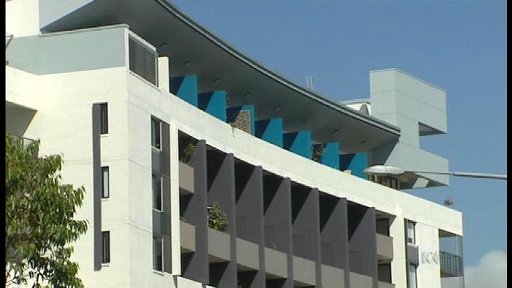 Precast Concrete Panel highrise for Ku-ring-gai
Precast Concrete Panel highrise for Ku-ring-gai
At the core of this story is the reluctance – or perhaps the cunning – of the Department of Planning over that figure. What’s required of Ku-ring-gai was and remains rubbery. As local activist Don Brewer says: “Success was never defined.”
The Architectus scheme kept developments close to the railway stations along the ridge line. Four to five-storey buildings stepped down to meet their neighbours. Heritage neighbourhoods didn’t escape unscathed, but the sacrifices were minimal. Though the plan allowed for more than 12,000 new dwellings, it was rejected by the then planning minister Andrew Refshauge for offering “only very limited opportunities for provision of additional housing choice” and placing “unnecessarily restrictive” controls on development.
“Fundamentally you would have to say the council did what it was asked,” says Andrew Watson, who is now director of strategy and environment at Ku-ring-gai, but was then the department’s regional director in Western Sydney. “Council would to this day swear they have done exactly what they were asked and were treated unfairly and history will say that’s probably not an unfair interpretation.”
Finally gazetted by the government in 2004 was a brutally simple scheme known as LEP 194 allowing for five-storey apartments from edge to edge of the planning zones. No set backs. Individual heritage buildings would escape demolition, but there were none of the Urban Conservation Areas that protect swathes of Mosman, Woollahra and Hornsby. Indeed, Ku-ring-gai is at present one of only two municipalities in the state with no gazetted heritage protection for streetscapes and neighbourhoods.
What’s more – and again this was unique to Ku-ring-gai – all the development slated until 2031 could happen at once.
.
There was to be no co-ordination, no order. Open slather. Developers swooped, picking the eyes out of the rezoned neighbourhoods. Already built or under construction are 4500 apartments, nearly half the supposed final target. Hence the cranes flying over the blossom trees.
.
The purpose of our little bus tour early this week was to see what Local Environment Plan 194 has already achieved. Many of the apartments are fine. Suburbs all over Sydney would welcome blocks of this quality.
But there are many shockers –
“We think they’re designed in Singapore,” says Mr Brewer – and the interface between apartments and houses is brutal.
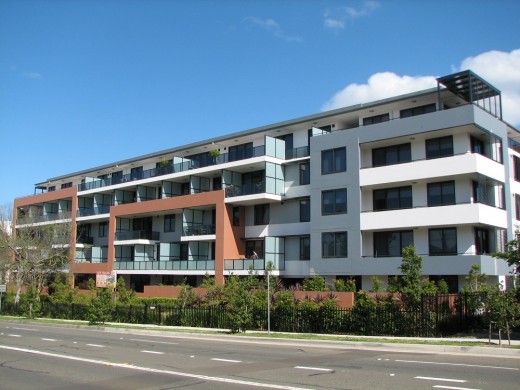 Garish Precast Concrete Panel highrise imposed upon Ku-ring-gai
Garish Precast Concrete Panel highrise imposed upon Ku-ring-gai
.
Big thinkers about the politics of necessary but painful planning changes make the point that residents need to know where the process will end. There needs to be a compact that once the sacrifices have been made, once the targets have been met, the residents and their community will be left alone. That’s absolutely not been the case in Ku-ring-gai. The Government keeps demanding more.
Even while LEP 194 was being haggled over, Refshauge announced that he had chosen six big sites scattered through the municipality for urban consolidation. And the day the LEP was gazetted, the new minister Craig Knowles directed Ku-ring-gai to go back to work and plan six new “town centres” along the railway line.
A fresh wave of horror swept the hills and valleys of the north shore. Once again the council prepared a plan to meet these targets and once again their plan was rejected by the minister – by this time the fractious Frank Sartor.
Developers effusively welcomed the fresh powers he was granted in the last weeks of the Carr regime. In March 2006, he was given further independent authority, this time to appoint – without inquiry or proof of corruption – a panel to take over most of the councils’ planning powers.
Ku-ring-gai was placed under a panel, one of three in NSW. Watson says: “This is the only council that has a panel it absolutely didn’t want and has fought tooth and nail.” A court challenge by the council failed in May 2008.
Imposing the panel provoked deep suspicions. In the ordinary run of things – ordinary, that is, in NSW – donations from Ku-ring-gai developers would be expected to flow to the majority party on the council. After a ferocious campaign in the 2004 local government elections, the Liberals were back in charge. “By appointing a planning panel to Ku-ring-gai,” argues activist Alan Parr, “the Labor Party effectively cuts off a revenue stream to the Liberal Party.”
In May this year, the panel presented its scheme for the town centres to a huge and unruly meeting in the auditorium of the UTS campus in Lindfield. This plan takes more care at its edges and for the first time gives heritage protection to neighbourhood blocks – not nearly as many as heritage experts have identified in past surveys for the National Trust and the council, but at least to a few.
The culture-breakers in the plans were the nine and 10-storey buildings on the sleepy – perhaps comatose – shopping centres of the upper North Shore.
How many new dwellings this represented is a matter of furious contention. Activists say the total has now crept up to about 18,000 with the possibility of many more if all the available development opportunities are taken up. Watson puts the number at 12,000.
But if the target figure ever really counted, it doesn’t count now. The chairwoman of the Planning Panel, Elizabeth Crouch, told the Herald: “We haven’t approached it on that basis. We’ve asked: what is a sensible planning outcome for properties within five or 10 minutes’ walk of the railway stations?”
Placards at the UTS meeting read “Time to stand up Barry”, ”Stop the rape of Ku-ring-gai”, ”Developer donations corrupt political parties”, ”Ku-ring-gai keep green not greed”, ”Trees not towers”. After three hours and 60 angry speakers, the Planning Panel retired to consider these representations and returned after four or five minutes to unanimously adopt the plan unaltered.
O’Farrell was there. He told the Herald: “These are people who live in Ku-ring-gai, who are law-abiding, who aren’t normally regarded as rabble-rousers, and this process … has driven them mad. We almost saw that come to blows.”
On September 27 a procession of hearses organised by Not So High, a new umbrella group of resident protesters, will wend its way down from Turramurra to the Domain to mark the Death of Democracy.
Come what may, it seems friendless Ku-ring-gai will be the seat of the premier in 18 months’ time. Developments worth hundreds of millions of dollars could be given the green light before then. No one there seems to have much faith that things will change radically if the Liberals come to power. O’Farrell is promising ”to return local planning control to local residents”.
 Promotional property development
to lure people into new medium density apartments
Promotional property development
to lure people into new medium density apartments
.
.
Developer Donations
.
Indeed, donations from many property developers were forthcoming to the NSW Labor Party between 2003-07. According to the Greens NSW website ‘Democracy 4 Sale‘ the following corporations were major donors to the NSW Branch of the Labor Party between 2003-07 alone. Which ones had/have a stake in property development in Ku-ring-gai?
Click to see details of each… .- >Australand Holdings
- >Bradcorp Holdings
- >Builddev
- >Grocon
- >Holdmark Developers
- >Johnson Property Group
- >Leighton Holdings
- >Medich Property Group
- >Memo Corporation Australia
- >Meriton Apartments
- >Mirvac Group
- >Multiplex Group
- >Property Council of Australia
- >Rosecorp
- >St Hilliers
- >Stockland Trust
- >Terrace Tower Group
- >The Village Building Co
- >Thiess
- >Tiffany Developments
- >Togo Group
- >Transfield
- >United Group
- >Walker Corporation
- >Westfield
- any many others
[Source: Greens NSW, Democracy4 Sale Project, ^http://www.democracy4sale.org, GoTo Search Donations > ‘Search NSW Election Funding Authority (NSWEFA) donations’, ^http://www.democracy4sale.org/index.php?option=com_content&view=article&id=206&Itemid=22, ‘The Democracy4sale project is an initiative of the Greens NSW. The Greens took a leading role in the campaign to reform political donations because we believe donations taint the democratic process – they allow big business to buy a level of access to politicians that ordinary people can’t afford.’ ]
‘National Trust warns on Ku-ring-gai Planning Panel plan’
[by Katrina Adamski, 20090814, ^http://north-shore-times.whereilive.com.au/news/story/high-density-plans-ripping/]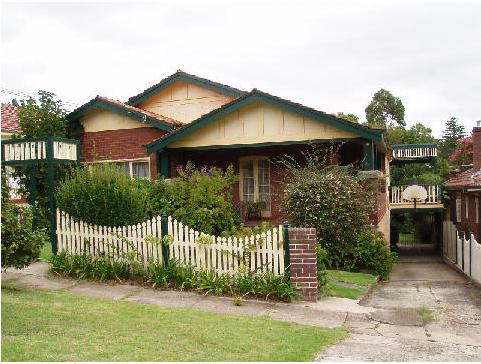 8 Burleigh Street, Lindfield demolished
8 Burleigh Street, Lindfield demolished
.
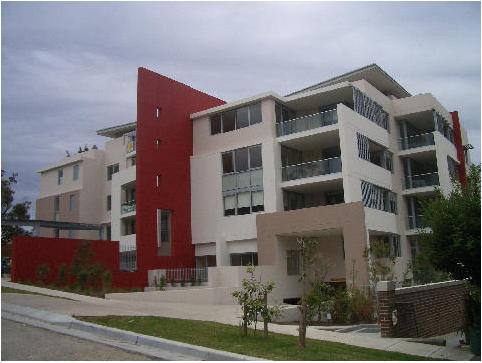 2-8 Burleigh Street, Lindfield replacement
2-8 Burleigh Street, Lindfield replacement
.
‘The heart of Ku-ring-gai is being ripped out with the possible demolition of 692 heritage homes. This is the view of the National Trust, which has taken a stance against the Ku-ring-gai Planning Panel’s proposals to build medium- to high-density development in the area’s six town centres. The trust’s core programs director Scott Woodcock said its members were trying to protect the natural and cultural heritage of Ku-ring-gai.
“The scale and magnitude of the threat to heritage buildings is unprecedented,” Mr Woodcock said.
“The outrage is still prevalent in the community following the public meeting attended by 1000 people and more than 1800 submissions were received.
“At the National Trust, we are still receiving calls every day about what they can do to stop the Planning Minister (Kristina Keneally) from gazetting the plans. People have also been calling for us to organise a rally but we would prefer to speak to the minister first.”
Heritage buildings under threat of demolition in National Trust conservation areas include 1 Maclaurin Pde, Roseville; the Spanish mission-style church, 1186 Pacific Highway, Pymble; Tulkiyan 707 Pacific Highway, Gordon; and 2 Victoria St, Roseville.
The former Gordon home of Harbour Bridge designer John Bradfield could also be bulldozed under the proposal.
Mr Woodcock said people were rightly concerned about losing their homes or having a six-storey development built next door to them.
“The spectacular P&O-style house at 1 Maclaurin Parade is not on the council’s heritage list or in a council conservation area,” he said.
“It is within the trust’s urban conservation area, but even if it was individually saved, it would be surrounded by high-rise.
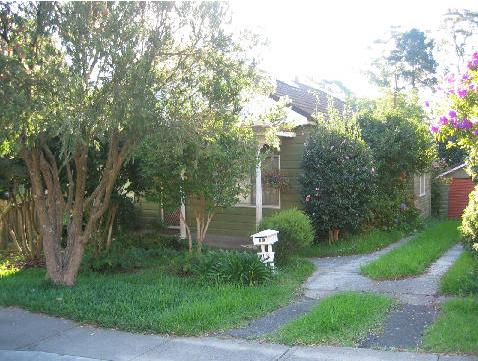 19 Moree Street, Gordon demolished
19 Moree Street, Gordon demolished
.
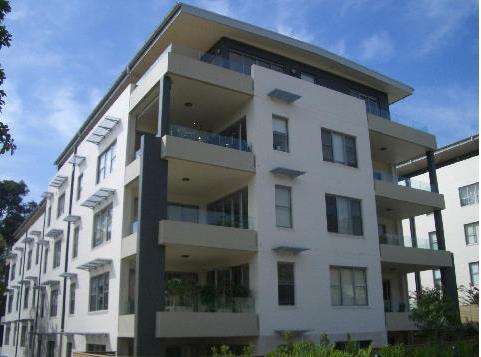 11-19 Moree Street, Gordon replacement
11-19 Moree Street, Gordon replacement
.
“The church and Tulkiyan are listed by the council, but even if they were kept they could be surrounded by high-rise which would destroy their curtilage.
“Practically the whole of Victoria St, Roseville, is under threat between Hill St and Spearman St.
“Only the school isn’t zoned for higher density’‘
But Planning Minister Kristina Keneally said there was “no requirement’’ for the 700 heritage homes to be demolished.
“The plan actually introduces heritage conservation zones,’’ Ms Keneally said. “In fact, the Bradfield house is proposed for heritage listing under the plan put forward to the department.
“It is important to remember that these are people’s homes.
It is up to an individual home owner as to what they do with their property.’‘
The minister said the government was identifying places, particularly around rail lines, where increased density and a different housing type could be accommodated.
Ms Keneally said only 6per cent of Ku-ring-gai was covered by the town centres plan.
But Opposition Leader Barry O’Farrell said almost 80 per cent of Ku-ring-gai urban conservation areas would be destroyed under the State Government’s planning proposals.
Mr O’Farrell said the National Trust report confirmed Labor’s statewide attack on heritage conservation.
“(Premier) Nathan Rees and (Planning Minister) Kristina Keneally are the Bonnie and Clyde of NSW, stealing the heritage heart out of the state,’’ he said.
“These decisions are borne out of the inherent conflict of interest of a minister also being responsible for preservation of heritage items.’‘
He said the National Trust report was as close as you could get to a respected, independent umpire giving Labor a capital F for fail for its “lousy heritage credentials’‘.
He said the NSW Liberal/Nationals had already committed, when in office, to appoint a separate heritage minister.’
.
Comments:
by Denise Hendy (20090820):
‘The ‘planning committee’ meeting at UTS was an insult to our intelligence. It was a total farce from a bulldozer panel committed to wrecking Ku-ring-gai’s leafy outlook. I have recently rejoined the National Trust because I feel they need support from locals to keep this Government on track. I cant believe the State Government iis allowing our heritage to be torn down. Australia is a young country and has little heritage to show. Obviously these people have never been to visit old communites overseas to see the beauty and wonder of heritage which is important for younger generations to see and realise our history.’
.
Residents formed the ‘Ku-ring-gai Residents Alliance’
- We oppose the plans for over-development and excessive high-rise in Ku-ring-gai
- Under the NSW ALP Government’s Sydney Metropolitan strategy an additional 10,000 dwellings are to be constructed in Ku-ring-gai between 2004 and 2031.
- Our two local state MPs are agreeing with the state ALP Government’s target of 10,000 dwellings for Ku-ring-gai.
- At the time of next year’s election (March 2011) we extrapolate from council’s data that only around 6,000 new dwelling DAs will have been approved in Ku-ring-gai.
- We want to limit new high-rise developments in Ku-ring-gai to the 6,000 dwellings. Our local state MP’s are thus supporting a further 4,000 new dwellings post the election.
- Stop_at_6000
- 4,000 additional dwellings are equivalent to another 100 new five-storey, high-rise blocks, about an additional 12,000 residents and about an additional 8,000 cars on our already congested roads.
Mr O’Farrell is quoted in the North Shore Times (Friday 15th October, 2010) as saying that he ‘has as much chance of halting development in Ku-ring-gai as unscrambling an omelet’.
However, the Ku-ring-gai Residents’ Alliance has prepared a recipe for Mr O’Farrell to ‘unscramble an omelet’ and limit dwellings to 6,000.
This Blueprint recipe was mentioned in the North Shore Times (3rd November, 2010) and the recipe can be found in full below….
1) Restore planning power to council by disbanding the Ku-ring-gai Planning panel (the Panel’s contract expires in March 2011 anyway)
2) Subject to the status of the Town Centres Local Environment Plan (LEP) as at March 2011 (currently LEP being litigated by Friends of Turramurra) council can then issue a new LEP with reduced heights and dwelling numbers and other revisions (a new LEP can override existing LEP(s))
3) The new Liberal Planning Minister can gazette the new LEP(s) (the Minister must be willing to accept an LEP providing for less than 10,000 total Metro Strategy Ku-ring-gai dwellings)
4) Disband the Joint Regional Planning Panels. These bodies approve developments over $10Million and Council developments over $5Million -which effectively mean most high-rise blocks and Council projects. (If these Panels are not disbanded then giving power back to Ku-ring-gai council is meaningless, as large developments will still go ahead, approved by these bodies).
5) Repeal Part 3A of the Act –which currently provides for developments that, in the opinion of the Planning Minister, are of State or regional environmental planning significance and includes large private developments over $100Million. These developments are taken over by the state government with few, if any, merit appeal rights by objectors and with overriding decision making by the Planning Minister.
6) Review and change the Metro Strategy and its targets. The Metro Strategy is purely a policy document that can be changed by the new government. The Labor Party is also currently reviewing the Metro Strategy and its targets and released a discussion paper in March 2010 Sydney Towards 2036.
You may wish to send an email to Ku-ring-gai’s two local MPs, Mr Barry O’Farrell (LOP@parliament.nsw.gov.au) and Mr Jonathan O’Dea (davidson@parliament.nsw.gov.au), urging them to adopt a comprehensive intelligent planning policy that takes into account all the possibilities such as green field development, satellite cites and development of regional areas and meanwhile for them to publicly pledge to limit new high-rise developments in Ku-ring-gai to the 6,000 dwellings figure, not the 10,000 target they want to respect (North Shore Times 1.10.10 and 15.10.10).
Please also email your concerns to the North Shore Times at letters@northshoretimes.com.au
You are not alone. Of more than 700 votes cast in the October 2010 North Shore Times’ online poll, 96 per cent wanted new dwellings capped at 6000.
‘Our elected representatives must listen to the community’
.
.
‘Friends of Turramurra seek public unity as they take Town Centres plan to Land and Environment Court’
[by Elias Jahshan, Hornsby Advocate newspaper, 20101125, ^http://hornsby-advocate.whereilive.com.au/news/story/lep-to-be-challenged-in-court/]Friends of Turramurra are seeking donations to help fund their legal action against the State Government over the Ku-ring-gai town centre plans. The community group will be taking NSW Planning Minister Tony Kelly and the Ku-ring-gai Planning Panel to the Land and Environment Court on Monday to appeal the Ku-ring-gai Town Centres Local Environment Plan (LEP), which was gazetted by Mr Kelly in May this year.
“We have been advised that our case has reasonable prospects. We hope the community will get behind us,” Friends of Turramurra (FOT) president Alan Parr said.
As the quality of decisions made during the LEP process can not be challenged, the appeal will attempt to prove that Mr Kelly and the Panel did not follow correct procedures when making the LEP.
Some of these incorrect procedures, as alleged by FOT, include an incomplete, invalid and misleading exhibition process, lack of consideration on environmental impacts, and changes allegedly made by the Panel and Mr Kelly without re-exhibition.
Mr Parr said that should FOT win the appeal, the LEP will be scrapped as a result.
“A whole new planning process can (then) be carried out, one that values public participation, follows proper process and correctly considers the environment,” he said.
Mr Parr refuted claims that compensation will need to be paid out to developers should the LEP be overturned. He explained that no construction under the LEP has commenced and compensation would be limited those who spent money to obtain an approved development application, and so far only three minor DAs have been approved under the LEP.
“If there is a change of Government next March and (NSW Opposition Leader) Barry O’Farrell remains true to his word and gives planning controls back to Council, then (Ku-ring-gai) Council will have no excuse to perpetuate these appalling plans,” he said.
“Instead it can scrap them completely and work with the community to do something positive and appropriate.”
FOT will be represented by Kirsty Ruddock, lawyer at the Environmental Defender’s Office and daughter of Berowra Federal Liberal MP Phil Ruddock.
The Planning Minister’s office was contacted for a comment on the issue.
“It’s not appropriate that the NSW Government commentate on legal action against (the LEP),” the spokesman to Mr Kelly said.
“In saying this, we stand by our decision in regard to the LEP.”
.
.
By July 2011…
.
‘Court finds Ku-ring-gai’s town centres plan `has no legal standing’
[by Lisa Herbertson and Catherine Zuill, North Shore Times, 20110728, ^http://north-shore-times.whereilive.com.au/news/story/court-finds-ku-ring-gais-town-centres-plan-has-no-legal-standing/].
Ku-ring-gai residents are celebrating after the town centres plan was found to have no legal standing by the Land and Environment Court’s Justice Malcolm Craig.
In a far-reaching decision this afternoon, Mr Craig said that the Ku-ring-gai Local Environmental Plan (Town Centres 2010) published on the NSW legislation website on May 25, 2010 had been made:
.
“Contrary to the provisions of division four of part three of the Environmental Planning and Assessment Act 1979 and is thereby of no legal force or effect’”.
The handing down of the decision took less than one minute at about 2pm today.
Planning MInister Brad Hazzard is considering this afternoon’s judgment.
Ecstatic residents who had packed the court room to hear the decision were carrying bottles of champagne and grinning from ear to ear as they were ushered out of the room where they stood chatting joyfully outside about today’s decision.
Premier Barry O’ Farrell, also the Ku-ring-gai MP, welcomed the result: “It’s a good decision because it seeks to reflect that local communities should be at the heart of local planning”’ he said.
“Our position and what we took to the campaign is that you can’t do local planning and ignore the community.
“This decision is consistent with our approach.’”
Davidson MP Jonathan O’Dea said he was delighted to hear the news on behalf of the local community. “I visited the court hearing a couple of time myself and congratulate those who led that action.
“It’s another demonstration on how planning power will be returned to the local community which is the philosophy of this government.’”
Mr O’Farrell’s Coalition government abolished the Planning Panel shortly after they came into power in March. The town centres LEP was challenged by Ku-ring-gai resident groups via Friends of Turramurra (FOT) on the grounds that due process was not followed, the public exhibition process was misleading, the impact on bushland and the environment was not properly considered, and the Planning Minister and Planning Panel made too many changes after the plan was exhibited.
Friends of Turramurra argued that these issues had state-wide implications and that there was a public interest in challenging the plan.
A tearful Alan Parr, president of Friends of Turramurra said: “The message we’d like to convey is it’s a great day not only for Ku-ring-gai, but for communities all across NSW.
“It’s really going to force Planning Ministers to follow proper procedures.”
“What we’re hoping is that it will hold planning ministers to account and should generally return powers to Ku-ring-gai.”
“This gives Ku-ring-gai the chance to start fresh with plans that are sympathetic to the community.”
Mr Parr said he was not able to say how much had been spent on the court challenge but they would apply for costs to be paid by the opposing party.
A Ku-ring-gai Council spokesman said the council was not in a position to comment until the council had seen the court’s document.
“It’s a very long and complex judgement which requires quite a bit of analysis,”’ he said.
“Also, it’s worth noting that the council is not a party to the case, which is between Friends of Turramurra and the State Government.”
.
Other Comments:
The National Trust of Australia descibed the decision as a “victory for all of NSW”.
The Trust’s policy and communications director Scott Woodcock said:
“Regrettably, Sydney’s heritage has suffered irreversible damage during the short life of the Town Centres LEP. Entire neighbourhoods of heritage significance have already been destroyed.’‘
“Many of the recently constructed apartment buildings display a fundamental lack of understanding of context and neighbourhood character. These new poorly sited apartments will stand for the next 100 years as monuments to a planning failure. “
.
Ku-ring-gai Residents’ Alliance (KRA) president Chris Drummer said: “It’s a very big day for Ku-ring-gai and all communities in NSW.
“The decision reflects the poor planning we have endured for almost two decades,’’ he said. “We trust this is a new beginning and look forward to resolving the dwelling numbers now for Ku-ring-gai and the other destructive existing planning instruments.”
KRA had called on Premier Barry O’Farrell, also the Member for Ku-ring-gai, to revoke “this destructive LEP’‘.
Friends of Turramurra’s Stan Wesley said: “A lot of taxpayers’ money went into creating these plans. I hope that today’s decision encourages other community groups to stand up for their rights.”
Friends of Turranmurra’s Janet Harwood said: ” It was just clearly wrong.
“The system is full of flaws and to put something in like this would have been a disaster. The decision is an indication of what the community have been saying for years.”
Davidson MP Jonathan O’Dea said he was delighted to hear the news on behalf of the local community. “I visited the court hearing a couple of times myself and congratulate those who led that action.
“It’s another demonstration of how planning power will be returned to the local community which is the philosophy of this government.”
.
.
‘Celebration time as high-rise plans thrown out of court‘
[by Kelsey Munro, Sydney Morning Herald, 20110729, ^http://smh.domain.com.au/real-estate-news/celebration-time-as-highrise-plans-thrown-out-of-court-20110728-1i2e3.html, accessed 20110729].
Resident action group ‘Friends of Turramurra‘ (FOT) last month felt that they had won a significant victory against over-development in the Sydney North Shore leafy suburb of Ku-ring-gai. The New South Wales Land and Environment Court ruling a Ku-ring-gai town centre plan was judged ‘invalid’ due to failures in the state Planning Department’s public exhibition process. The plan for the rail corridor running through six suburbs making up Ku-ring-gai, threatened to impose dense high rise apartment buildings of up to ten storeys in what has for over a hundred years been a quiet leafy residential area, characterised by stately heritage dwellings and gardens, many dating back to Australian Edwardian and Federation periods.
The plan was one devised by the previous Labor Government, since thrown out of office in the March 2011 NSW election. NSW Labor, trying to cope with excessive housing demand in Sydney, had sought to supply capacity for 10,000 along the northern rail corridor through Ku-ring-gai. But NSW Labor had been frustrated by resistance from local councils defending the rights and interests of their constituent residents. So NSW Labor had introduced legislation to overrule local councils’ planning powers, give absolute power to the Minister for Planning and In the Ku-ring-gai case, set up a Ku-ring-gai Planning Panel to rezone (degrade) Ku-ring-gai real estate from first class residential into high rise commercial along the rail corridor. But for Ku-ring-gai, the proposed scale of rezoning and development threatened substantial undermining of the mush prized residential amenity of leafy Ku-ring-gai.
NSW Labor’s impost was an undemocratic law and process, behind closed doors that ignored the interests and value of local residents. It was seen as ideological vindictive an impost by a socialist Labor Party culture that perceived the residents of Ku-ring-gai as wealthy elites undeserving of their leafy exclusive suburbs. It was reminiscent of land grabs of established society by totalitarian socialist regimes – Castro’s Cuba (1960), Mao’s China (1966-76), Lenin’s Russia (1917).
The Friends of Turramurra have since called for an inquiry into the way the former Labor government and the Planning Department handled Ku-ring-gai during the past decade. This is appropriate and important to restore the community’s faith delegating representative trust in government at elections and to restore the community’s support for the machinations of government process and law making.
In Ku-ring-gai, the July 2011 judgment is being hailed as a victory for communities fighting for a say in how their suburbs develop. But victory was perhaps more due to the commitment and deep pockets of the residents and the expert support from the Environmental Defender’s Office. President of the Friends of Turramurra group, Alan Parr, has said:
.
”What the judgment does is show that planning ministers are not all powerful.
They have to follow proper process and procedure.
They have to show respect to community opinion and they cannot conduct themselves behind closed doors outside of public scrutiny.”
.
.
‘Resident group’s victory leaves Ku-ring-gai in a planning limbo’
[by Kelsey Munro, Urban Affairs, Sydney Morning Herald, 20110802, ^http://www.smh.com.au/nsw/resident-groups-victory-leaves-kuringgai-in-a-planning-limbo-20110801-1i8by.html].
‘Ku-ring-gai residents may have been jubilant last Saturday, but the council not faces a planning challenge. Unlike the residents who won a battle against high-rise, Ku-ring-gai council is not opening champagne over last week’s court decision which threw out a major planning document and put a costly six-year process back to square one.
The Ku-ring-gai mayor, Ian Cross, said the legal victory of the Friends of Turramurra has put the area in planning limbo, stuck with the problem of where to fit 10,000 new dwellings, and effectively burning about $4 million of ratepayers’ money.
Despite Ku-ring-gai council previously distancing itself from the Town Centres Local Environmental Plan as a creation of the Labor government, yesterday the mayor called the court decision ”a major disappointment”.
Cr Cross said procedural errors which invalidated the LEP were not council staff’s doing, and he hoped to meet the Planning Minister, Brad Hazzard, to discuss the ramifications.
”I certainly respect the actions of Friends of Turramurra as its members had a democratic right to challenge the legality of this plan,” Cr Cross said.
”But it’s important to note the decision rested on procedural matters, not the actual merits of the plan.”
.
The plan was not just about ”medium density housing” and extra capacity for town centres at Gordon, Roseville, Lindfield, Pymble, St Ives and Turramurra, he said, but also provided for new parks, heritage conservation areas and streetscape improvements.
Ku-ring-gai councillor Tony Hall said those affected, such as Charter Hall REIT, which bought the Gordon Centre shopping mall in January, or the private Masada College in Lindfield, may have the right to sue for compensation.
”All [Masada’s] plans to upgrade the school have gone down the gurgler. They have the right to a class action against the state government and they’d join the council to it,” Cr Hall said. ”[Hazzard] has the power to amend the LEP to overcome the invalidity issues in the judgment, and if Barry O’Farrell and his government have got the will, that’s what they should do.”
The way in which former planning minister Tony Kelly rezoned Masada’s land from two to five storeys was a key error identified by the court, while Charter Hall bought the Gordon Centre when its height limit had been increased to 10 storeys under the now-defunct plan, affecting its commercial value. The college and Charter Hall REIT did not wish to comment.
The property industry said a new LEP must be developed quickly.
”It does make the investment climate difficult when you can’t rely on consents and instruments issued by the state,” said Glenn Byres, from the Property Council. The planning department is reviewing implications of last week’s judgment and declined to comment.
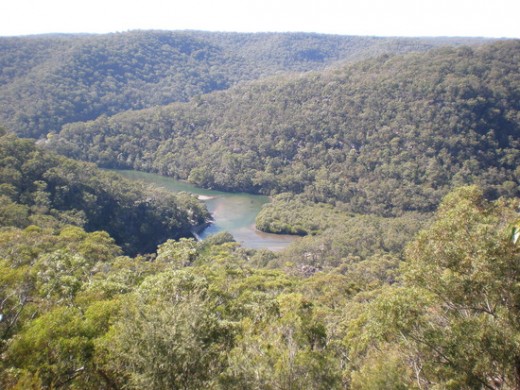 Ku-ring-gai Chase National Park
(Ku-ring-gai before ANY development)
Ku-ring-gai Chase National Park
(Ku-ring-gai before ANY development)
.
.
Further Reading:
.
[1] National Trust, ^http://www.nationaltrust.com.au/about/media/files/280711%20Ku-ring-gai%20Judgement.pdf
[2] Friends of Ku-ring-gai Environment, Inc., Newsletter, October 2010, ^http://www.foke.org.au/downloads/NltrOct10.pdf [Read More]
[3] Ku-ring-gai Residents Alliance, ^http://www.notsohigh.org.au
.
– end of article –
.

